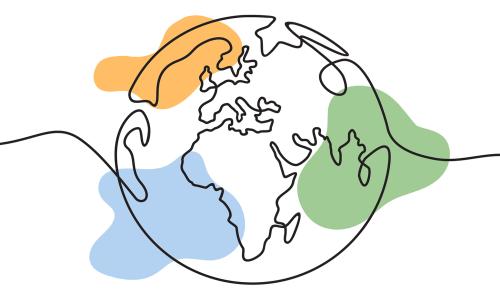Executive Summary
Few developments have had broader consequences for the public sector than the introduction of the Internet and digital technology. Electronic government offers the promise of utilizing technology to improve public sector performance as well as employing new advances for democracy itself. In its boldest formulation, technology is seen as a tool for long-term system transformation.
Unlike traditional bricks and mortar agencies, digital delivery systems are non-hierarchical, non-linear, interactive and available 24 hours a day, seven days a week. The non-hierarchical character of Internet delivery permits people to look for information at their own convenience. The interactive aspects of e-government allow both citizens and bureaucrats to send as well as receive information.
Given the fundamental nature of these advantages, some predict the Internet will transform government. Many have welcomed electronic governance as a way to improve service delivery and responsiveness to citizens. “Electronic government will not only break down boundaries and reduce transaction costs between citizens and their governments but between levels of government as well,” states Stephen Goldsmith, President George W. Bush’s former Special Advisor for Faith-Based and Community Initiatives. Jeffrey Seifert and Matthew Bonham argue digital government has the potential to transform governmental efficiency, transparency, citizen trust and political participation in transitional democracies.
Many governmental units have embraced the digital revolution and are putting a wide range of materials—from publications, databases to actual government services–online for citizen use. Governments around the world have created websites that facilitate tourism, citizen complaints and business investment. Tourists can book hotels through the government websites of many Caribbean and Pacific island countries. In Australia, citizens can register government complaints through agency websites. Nations such as Bulgaria, the Netherlands and the Czech Republic are attracting overseas investors through their websites.
Despite the great promise of technological advancement, public sector innovation has tended to be small-scale and gradual. Factors such as institutional arrangements, budget scarcity, group conflict, cultural norms and prevailing patterns of social and political behavior have restricted government actions. Because governments are divided into competing agencies and jurisdictions, policymakers struggle to get bureaucrats to work together in promoting technological innovation. Budget considerations prevent government offices from placing services online and using technology for democratic outreach. Cultural norms and patterns of individual behavior affect the manner in which technology is used by citizens and policymakers. In addition, the political process is characterized by intense group conflict over resources. With open and permeable systems, groups organize easily and make demands on the political system.
The United States has fallen behind many countries in Internet access and broadband usage. According to the 2007 Science, Technology and Industry Scoreboard of the Organization for Economic Cooperation and Development, America lags Switzerland, Sweden, Australia, the Netherlands, Denmark and Germany in Internet subscribers per 100 inhabitants. Whereas 36 percent of Swiss residents have access to Internet subscription services, 31 percent of Americans have access to the Internet. More worrisome is broadband access. Here, the U.S. ranks 15th among OECD nations, down from fourth place in 2001. Thirty-five percent of Danes have access to high-speed broadband, compared to only 22 percent of Americans. This limits the ability of Americans to take full advantage of the Internet and media-rich applications. To maintain its technology edge in the 21st century, the United States simply must invest more in research and development.
On the other hand, for countries that have implemented portal sites, there remain inconsistencies in terms of design, navigation and usability. Portals are useful to citizens because they offer uniform, integrated and standardized navigational features. Unfortunately, many national websites have been inconsistent in terms of design features. Because government agencies carefully guard their autonomy, it has taken a while to get agencies to work together to make the tasks of citizens easier to undertake. Common navigational systems help the average citizen capitalize on the wealth of material that is available online.
Governments need to utilize more features that enhance public accountability. Website search engines, for example, are simple but important tools that allow citizens to find the information they want on a particular site. Currently, only one-third of government websites are searchable, limiting ordinary citizens from finding the information relevant to them.
The same logic applies to the technologies that allow citizens to post comments or otherwise provide feedback about a government agency. Citizens bring diverse perspectives and experiences to e-government, and agencies benefit from citizen suggestions, complaints and feedback. A simple feature such as a comment form empowers citizens by giving them an opportunity to voice their opinion about government services they would like to see.
Countries need to update their sites on a regular basis. Some sites appear to have not been updated in several years, and consequently contain inaccurate information, broken links and incorrect email contact information. By maintaining their sites and placing more materials online, countries would be encouraging citizens and members of the business community to go online and use e-government resources.
Clearly, a major problem of electronic government is the up-front costs of developing a website and putting services online. Right now, many nations appear to be undertaking these tasks in isolation from others. As a result, countries are robbing each other of the opportunity to achieve economies of scale that would lower the per unit cost of official government websites. Smaller and poorer countries should undertake regional e-government alliances that would allow them to pool resources and gain greater efficiency at building their infrastructure. Such collective efforts give citizens, interested in a region, one place to find information that cuts across individual nations. At the same time, such a site also offers economies of scale to specific countries in placing cultural and religious material on the Internet. These efforts at regional cooperation are valuable because they put countries in a position where they can share knowledge and expertise as well as lower their overall budget costs.
In general, e-government is not radically transforming the public sector. While some countries have embraced digital government broadly defined, the United States is falling behind in broadband access, public sector innovation and in implementing the latest interactive tools to government websites. This limits the transformational potential of the Internet and weakens the ability of technology to empower citizens and businesses. Government websites must make better use of available technology, and address problems of access and democratic outreach.
This report reviews the current condition of electronic government and makes practical suggestions for improving the delivery of information and services over the Internet. .Using a detailed analysis of 1,667 national government websites in 198 nations around the world undertaken in Summer 2008, this report studies the types of features available online, the variation that exists across countries, and how current e-government trends compare to previous years, as far as 2001.
Among its significant findings are that countries vary enormously in their overall e-government performance. In technology utilization, the United States has fallen behind countries such as South Korea and Taiwan. The most highly ranked e-government nations in our study are South Korea, Taiwan, the United States, Singapore, Canada, Australia, Germany, Ireland, Dominica, Brazil and Malaysia. At the other end of the spectrum, countries such as Tuvalu, Mauritania, Guinea, Congo, Comoros, Macedonia, Kiribati, Samoa and Tanzania barely have a web presence.
Across the world, 50 percent of government websites offer services that are fully executable online, up from 28 percent last year. Ninety-six percent of websites this year provide access to publications and 75 percent have links to databases. More problematic is that only 30 percent show privacy policies and 17 percent have security policies. Only 16 percent of government websites have some form of access for disabled persons, while 57 provide foreign language translation to non-native readers. Fourteen percent offer the ability to personalize government websites to a visitor’s area of interest, while three percent provide PDA accessibility. The remainder of this report reviews these findings in greater detail and closes by making recommendations for more effective use of digital technology.



